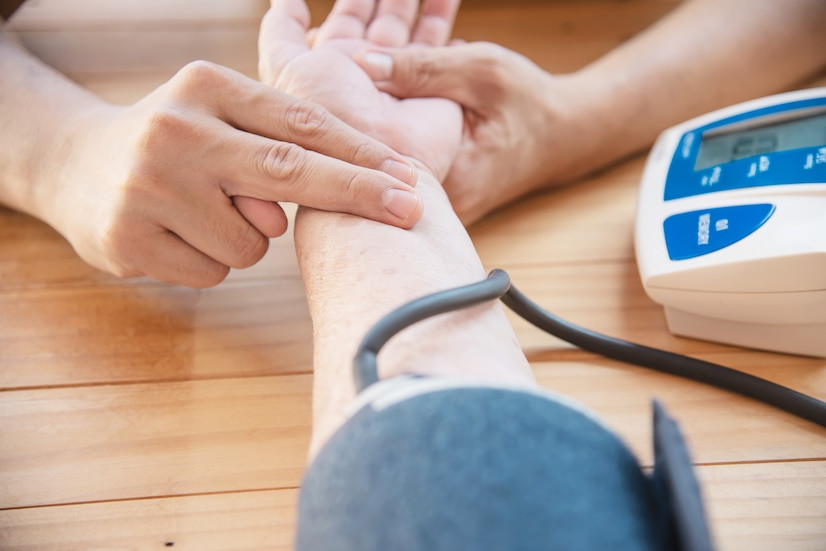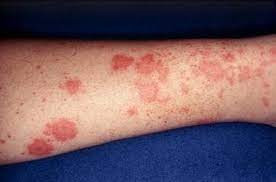Definition
Vasculitis is a group of diseases that cause inflammation of blood vessels, such as arteries and veins. Inflammation is the immune system's natural response to injury or infection that allows the body to fight off incoming germs. However, in vasculitis, the immune system attacks healthy blood vessels, causing them to swell and narrow, resulting in impaired blood flow. Poor blood flow will cause damage to tissues and organs. Vasculitis can range from mild to severe, even life-threatening if it affects vital organs.
There are several types of vasculitis, namely:
- Beceht's disease
- Buerger's disease
- Churg-Strauss syndrome
- Cryoglobulinemia
- Giant cell arteritis
- Granulomatosis with polyangiitis
- Henoch-schonlein purpura
- Kawasaki disease
- Takayasu arteritis
Causes
The cause of vasculitis is unknown. Some types of vasculitis are linked to genetic changes in the patient, whereas others are caused by immune system abnormalities. This immune system reaction can be triggered by:
- Infections such as hepatitis B and hepatitis C
- Use of medications such as hydralazine, allopurinol, minocycline, and propylthiouracil
- Blood cancer
- Immune system diseases such as rheumatic arthritis, lupus and scleroderma
Risk factor
Vasculitis can affect anyone, but several factors increase a person's risk of developing vasculitis, including:
- Age. Giant cell arteritis is rare in people under the age of 50, while Kawasaki disease is most common in children under the age of 5
- Family history. Some types of vasculitis such as Bechet's disease, granulomatosis with polyangiitis, and Kawasaki disease can be inherited
- Lifestyle. Cocaine use and smoking may increase the risk of vasculitis. Men under 45 who smoke have a higher risk of developing Buerger's disease
- Gender. Giant cell arteritis is significantly more common in women, whereas Buerger's disease is more common in men
Symptoms
Many types of vasculitis can cause wide ranges of symptoms, severity, and duration of illness. Vasculitis can affect only one organ or multiple organs. In general, the symptoms of vasculitis are:
- Fever
- Headache
- Fatigue
- Weight loss
- Joint or muscle pain
Other symptoms according to the affected body part may include:
- Digestive system. If the stomach or intestines are inflamed, there will be symptoms such as pain after eating. There may also be openings in the gastrointestinal tract that can bleed and blood may be found in the stool
- Dizziness, ringing in the ears, and sudden decrease in hearing
- Eyes. Vasculitis can cause inflammation of the eyes, resulting in redness, itching, or burning. The giant cell arteritis type of vasculitis can cause double vision and temporary or permanent blindness in one or both eyes. These symptoms may be the first signs of giant cell arteritis
- Hands and feet. Certain types of vasculitis can result in numbness or weakness in the hands and feet. The palms of the hands and feet can swell or harden
- Lungs. Vasculitis in the lungs can cause shortness of breath or bloody coughing
- Skin. Bleeding under the skin due to vasculitis may appear as red patches. Vasculitis may also cause bumps or open sores on the skin
Diagnosis
Early diagnosis of vasculitis is required so that treatment can begin immediately to avoid permanent damage from severe vasculitis. Firstly, the doctor will inquire about your medical history before performing a physical examination. The doctor will also order additional tests to confirm the diagnosis or rule out other possible causes of vasculitis. The examinations include:
- Blood test. This is to look for signs of inflammation, which is usually indicated by an increase in C reactive protein. In addition, the blood test can reveal the number of red blood cells as well as the presence of specific antibodies such as ANCA (anti-neutrophil cytoplasmic antibody)
- Radiologic examination. This examination can determine which blood vessels and organs are affected as well as how your body is responding to the treatment. Imaging techniques include X-rays, CT scans, MRIs, and PET scans
- Angiography (X-ray of blood vessels). This procedure involves inserting a small, flexible tube like a thin straw (catheter) into a large blood vessel. A dye is injected into the catheter, and X-rays are obtained as the dye fills the blood vessels. The X-ray will show the shape and structure of the blood vessels
- Biopsy. This surgical procedure is used to obtain a small amount of suspected vasculitis tissue. The sample will be analyzed in the lab
Management
Depending on the type of vasculitis, some may recover without treatment. Most cases of vasculitis, however, necessitate the use of medication to control inflammation and prevent recurrence by addressing the underlying causes. Treatment of vasculitis includes:
Medications. Corticosteroids, such as prednisone are the most commonly prescribed drugs to control inflammation due to vasculitis. Side effects of corticosteroids can be severe, especially if taken for a long period, so your doctor may prescribe the lowest possible dose. Possible side effects include weight gain, diabetes, and bone loss.
Other immunosuppressive drugs may be administered alongside corticosteroids to control inflammation, allowing the corticosteroids to be gradually reduced in dose. The choice of medication is based on the type of vasculitis, its severity, the organs affected, and any other medical conditions you may have.
Examples of such drugs are methotrexate, azathioprine, mycophenolate, cyclophosphamide, tocilizumab, and rituximab.
If vasculitis causes an aneurysm, surgery is necessary because the dilated blood vessels are at risk of tearing. Furthermore, in some cases, blood vessels that have become blocked by blood clots must be treated surgically to restore blood flow.
Complications
Complications of vasculitis depend on its type and severity, or can also result from side effects of medications for vasculitis. Complications that may occur include:
- Organ damage. Some types of vasculitis can cause damage to vital organs
- Blood clots. Blood clots may form in the blood vessels, blocking blood flow
- Aneurysms. Although rare, vasculitis can cause blood vessel walls to weaken and dilate to form aneurysms. This complication is caused by untreated giant cell arteritis
- Some medications used to treat vasculitis can lower your immune system making you more susceptible to infections
Prevention
As most vasculitis is an autoimmune, there is no specific way to prevent the onset of vasculitis. However, some vasculitis triggered by infections or allergic reactions can be prevented by preventing the infection or allergy-precipitating agent.
When to see a doctor?
As most vasculitis is an autoimmune, there is no specific way to prevent the onset of vasculitis. However, some vasculitis triggered by infections or allergic reactions can be prevented by preventing the infection or allergy-precipitating agent.
Looking for more information about other diseases? Click here!
- dr Anita Larasati Priyono
Vasculitis. nhs.uk. (2022). Retrieved 14 April 2022, from https://www.nhs.uk/conditions/vasculitis/.
Vasculitis - Diagnosis and treatment - Mayo Clinic. Mayoclinic.org. (2022). Retrieved 14 April 2022, from https://www.mayoclinic.org/diseases-conditions/vasculitis/diagnosis-treatment/drc-20363485.
What Are the Types of Vasculitis? Symptoms, Causes, Treatment. eMedicineHealth. (2022). Retrieved 14 April 2022, from https://www.emedicinehealth.com/vasculitis/article_em.htm.











